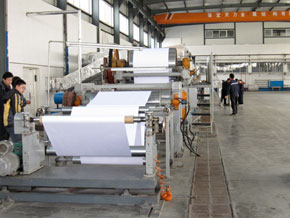So, my loyal readers who have been keeping count will know that this to be my 100th post. I thought I would celebrate this exciting occasion with a review of how some of my recommendations have worked out. I know hindsight makes everything look more certain than it was, but it is definitely a useful exercise to see where my investing went well and where it went amiss. So I thought I would look at what price my recommendations wound up at, whether I would have sold along the way, and whether the investing thesis still applies.
 I thought it would be best to go by category. My favorite category, of course, is companies with high and stable free cash flows. When these stocks are selling at very low multiples of free cash flow, as they often are, it is the clearest evidence to me that the market frequently and exploitably gets things wrong.
I thought it would be best to go by category. My favorite category, of course, is companies with high and stable free cash flows. When these stocks are selling at very low multiples of free cash flow, as they often are, it is the clearest evidence to me that the market frequently and exploitably gets things wrong.
The first example of such a company was Qwest, which I recommended way back in June of 2009. Back then it was at $3.86 cents, and after the CenturyTel acquisition was announced last year, which unlocked a recognition of Qwest’s true value, the company ultimately hit what I consider a fair price of $6.95, and actually moved beyond it. All the while the company maintained its dividend, which at the time of recommendation yielded roughly 8%. I would call that a success.
Windstream, which I recommended in mid-July of 2009 at $8, was a similar success. It is now at $13.50, curiously nearly a dollar off of its peak, and has continued its very generous but well-covered dividend of 12.5%. As I calculated, it is perhaps finally fairly valued based on its recent free cash flow levels, and I will want to see how its acquisitions contribute (or fail to contribute) to future earnings levels. Unfortunately, Windstream’s recent acquisitions have largely been of private companies which have not released sufficient data to allow me to value them independently. Even so, I cannot say that Windstream is definitely overpriced and therefore I will continue to hold it.
The next idea in this vein was Compass Minerals, from late August 2009. At the time they were at 52.56 with a P/E ratio of 9.5. After my recommendation they spent a lengthy period drifting more or less straight upward to a little over their current price of $87.79 and a P/E ratio of over 19. Not bad, one might say, but I should point out that although salt for roads is an essential product, and although Compass Minerals holds some of the most lucrative salt mines in the world, salt is inexpensive and bulky enough that cost of transporting it limits the geographical area that the company can cover. Also, global warming or not, demand is also subject to physical limitations, and of course state and municipal budgets are under pressure. As a result, I would call Compass Minerals overpriced now and would definitely have called for selling it somewhere along the way up.
My next discovery was Breitburn Energy Partners at the end of September 2009. This was a textbook value case. Its management had decided to suspend its dividend for liquidity reasons, which caused a mass exodus of investors despite the fact that Breitburn was still making the same money, just not distributing it. At the time they were selling at $10.83, and are now selling at $21, as they were able to resume their distributions, although not at their historical level of 50 cents a quarter. They hold a number of long-lived assets and engage in a number of hedges to lower their exposure to falling oil prices. They have an earnings yield of around 10% at present, which makes me at least consider selling. However, Linn Energy, another recommendation of mine in a similar vein (went from 22.04 when I recommended them to a present 38.21), and I sold them only when their earnings yield dropped to 8%. So, their hedging strategy does give me some confidence that their cash flows will be stable enough to justify a lower than normal earnings yield, and based on Breitburn’s current earnings an 8% yield would put the target price at around $25, so there is still an upside here.
Just so you don’t think this post is solely about bragging, there are times when this strategy has not (yet) produced results. Chiquita Brands has an attractive present and prospective earnings yield, with a price/free cash flow ratio of 6 when I recommended it. Earnings have declined somewhat as a result of weak pricing in Europe, but on the whole the company still has an attractive price/free cash flow ratio, and when Europe implements the tariff liberalization that the WTO forced on them, I expect that earnings will improve further. Furthermore, as 2/3 of their sales are in Europe, investors who are concerned about the future of the US dollar might find them attractive on this ground too. Nonetheless, I recommended them in February 2010 at 15.13 and they are now at 13.82. I remain confident that their true earnings power will ultimately be recognized by the market, and of course the essence of value investing is that individual market participants can decide that a company is attractively priced without the need for the market to immediately confirm it.
On the whole, though, I have found that these pure free cash flow plays have produced more than satisfactory results, and from among the various categories of stocks I consider, they give me the greatest confidence of good results.
 Alongside these companies that are cheap based purely on free cash flow, I have examined on this website companies that do not necessarily offer outsize free cash flow yields, but also have other attributes that make them attractive.
Alongside these companies that are cheap based purely on free cash flow, I have examined on this website companies that do not necessarily offer outsize free cash flow yields, but also have other attributes that make them attractive.
The first such stock is Rayonier, which owns a large amount of timber acreage and has a vertically integrated paper and wood fiber products operation. The large holding of land serves as an excellent hedge against inflation, which could justify a larger multiple. When I recommended it in August of 2009 it had a P/E ratio of 20 and a price of $39.93. They have had some earnings growth, but the price has been propelled to $57.35. The current price/free cash flow ratio has declined to approximately 16, although capital expenditures are not lower than the historical levels. Even so, I do not feel comfortable projecting continual growth, and as I have a sanguine view of inflation I would say that Rayonier is somewhat overpriced at this time.
The second such stock is Ross Stores, which I recommended on the grounds that as a discount store, its competitive position becomes stronger during a recession. In the jargon of Wall Street, then, it is a countercyclical stock. Last December when I suggested it, it had a P/E ratio of 13.6 and a price of $42.37. Now it is at $63.95 and, thanks to some sales growth and store openings, earnings have increased, allowing Ross to retain a P/E ratio of 14.5. I wonder, though, how many customers will go back to non-discount stores when the economy improves, and how many customers, like me, enjoy the treasure hunt aspect of Ross and would shop there regardless.
Even Seth Klarman has advocated that finding cheap hedges where they are available should be part of a value strategy. As a result, companies that by dint of their assets or market niche offer additional protection from certain events occurring would perhaps be entitled to a premium. However, it would be dangerous to take this too far; a company’s hedging characteristics should serve as a sweetener and not itself the basis of an investment.
 My third category of stocks I considered bargains based on balance sheet characteristics. These companies have a long history in value investing circles; Ben Graham himself liked the idea of net-nets, companies for which the net of their cash, receivables, and inventories over all of a company’s liabilities is still less than the company’s market cap. In a normally functioning market these situations are definitely anomalous, and are often indicative of some weakness, impending negative contingency, or inaccuracy in the accounting itself. However, if the companies are profitable and operationally sound, a set of them should in theory offer attractive results as the market anomaly, or at least the market pessimism is resolved. And at any rate, the earnings of the company itself perhaps can be discounted at a lower rate than the usual equity rate because the stock is already trading at below the theoretical price floor. My returns from this set of recommendations is perhaps significantly below that of the pure free cash flow plays, although the timing of the recommendations, when the market returned to normalcy and then to what looks like great optimism in the present situation may have something to do with it.
My third category of stocks I considered bargains based on balance sheet characteristics. These companies have a long history in value investing circles; Ben Graham himself liked the idea of net-nets, companies for which the net of their cash, receivables, and inventories over all of a company’s liabilities is still less than the company’s market cap. In a normally functioning market these situations are definitely anomalous, and are often indicative of some weakness, impending negative contingency, or inaccuracy in the accounting itself. However, if the companies are profitable and operationally sound, a set of them should in theory offer attractive results as the market anomaly, or at least the market pessimism is resolved. And at any rate, the earnings of the company itself perhaps can be discounted at a lower rate than the usual equity rate because the stock is already trading at below the theoretical price floor. My returns from this set of recommendations is perhaps significantly below that of the pure free cash flow plays, although the timing of the recommendations, when the market returned to normalcy and then to what looks like great optimism in the present situation may have something to do with it.
The first net-net I recommended was Keytronic at $2.38, which at the time had a net current asset value of $3.37. When a quarterly earnings report indicated that Keytronic was returning to its normal earnings power, that gap was resolved very quickly. The stock is now at $5.62, but its current net current asset position is $37.3 million, which is a share price of $3.60. Keytronic has got its earning power back into gear, having produced $6.18 million in earnings for the last four quarters (after applying a tax rate of 35% to their pretax earnings, as they received a large tax refund in the 3rd quarter of 2010). This gives them a P/E ratio of 9.41. However, Keytronic has also made a significant increase in capital expenditures, which has resulted in free cash flow generation for the last four quarters of only $3.4 million. It may be that they are expanding their capital in the face of new business opportunities and earnings growth, but conservativeness calls for being suspicious of this opportunity and viewing all of this expenditure as merely necessary to maintain current earnings. This being the case, the net-net thesis and ordinary free cash flow analysis call for the stock to have been sold at a lower price. On the whole, though, this was a successful recommendation.
My next recommendation in this vein was the very small Coast Distribution System (CRV), which I recommended at the beginning of 2010. It had a market cap of $17.4 million and had a net current asset value of $25.6 million. The company is still profitable, having a present free cash flow yield of just under 7%; however, prices have moved from $3.91 when I made my recommendation to a whopping $3.99 today. Even so, the net current asset position is still $25.7 million so this experiment, although not successful, is still ongoing.
Jewett Cameron, another tiny company in this vein, showed better results. At the time I recommended it in February of 2010, it sold at $6.21 with a market cap of $14 million and a net current asset position of $16 million. They also offered a P/E ratio of 7. Now they sell at $9.36, or $21.6 million in market cap. Earnings have been flat, giving them a current P/E ratio of 11.28 and its net current asset position of $17.3 million, so I would probably have wanted to sell somewhere along the way up.
The final entry in this field is Microfinancial, a company that finances business leases. It was recommended at the end of January 2010 at $3.21 and it is now at $4.04. The P/E ratio still stands at 11 and a half and the company, which was at a 40% discount to the net value of its loan portfolio at the time of recommendation, is still at a 17.5% discount to its asset value. However, as a financial company the book value of its portfolio is unreliable and subject to writeoffs, so Microfinancial should perhaps not be taken at face value.
On the whole, though, I think the results of this foray into net-nets can be pronounced a success, particularly since these results are theoretically less dependent on shifts in market sentiment.
The next category of stocks I have considered are companies that operate domestically in China. The stocks are cheap by the numbers, frequently with single-digit P/E ratios and rapid growth. However, upon consideration I have found that the legal issues surrounding these stocks, specifically the difficulty of actually getting money out of China, the fact that many key players are outside of the SEC’s jurisdiction, and finally the fact that China is inevitably a bubble, has caused me to consider that the attractive valuations are an insufficient attraction. Unfortunately, the stocks have not given me some face-saving performance until I have reached this decision. American Lorain, which I recommended in October of 2009, has gone from $3.01 then to $2.65 now. Skypeople Fruit Juice, recommended in April of 2010 at $6.15 is now at $4.33. China Security and Surveillance, recommended in May of 2010 at $5.16 is now at $4.97. And finally, HQ Sustainable, also recommended in May 2010 at $5.49 is now at $4.89.
 Another category with disappointing results has been in my short recommendations. As I stated before the market has moved from pessimism to startling optimism, and of course the companies that trade at high valuations, which attract optimists already, have not been immune to this trend. The trouble is that the higher the stocks go, as long as earnings or prospects do not improve, the more obvious the short theory becomes even as the losses accumulate. Now, given the results from the long side, one is left to wonder why I would even consider it necessary to be short. However, there is evidence that a long value/short strategy generates outperformance, at least in flat markets, and I am led to believe that my results from some of my value stocks are atypical.
Another category with disappointing results has been in my short recommendations. As I stated before the market has moved from pessimism to startling optimism, and of course the companies that trade at high valuations, which attract optimists already, have not been immune to this trend. The trouble is that the higher the stocks go, as long as earnings or prospects do not improve, the more obvious the short theory becomes even as the losses accumulate. Now, given the results from the long side, one is left to wonder why I would even consider it necessary to be short. However, there is evidence that a long value/short strategy generates outperformance, at least in flat markets, and I am led to believe that my results from some of my value stocks are atypical.
The first short candidate, in June of 2009, was Coinstar. At the time it was at $25.91 and now it is at $57.58, most likely from the spillover effect of Netflix. I suppose that technically I never did recommend covering, but in 2009 the stock began advancing immediately after I made my call, only to drift back downwards after a disappointing third quarter. I was able to cover at a small profit at that point. Their free cash flow is still virtually nonexistent, and earnings are perhaps a little better than last year as compared to last year as sales are up.
The next set of short candidates comes from the tech sector. The market optimism seems to naturally gravitate towards anything that shows signs of growth, and in theory businesses expanding their computer capital is possibly in the offing as the economy recovers. However, these firms still trade at ridiculous cash flow multiples that would not make sense even if these companies produce every quantum of growth that they are projecting. In September of 2010 I suggested shorting Concur, which sells expense tracking software…in the cloud! At the time it was at $52.01 and is now at $53.53. Red Hat, the open source Linux provider, I suggested shorting the very next week at $40.82, and it is now at $45.71. I suppose I can comfort myself that Concur has failed to beat the market, and Red Hat has matched it over the period studied. Netsuite, however, I recommended shorting in November of 2010 at $25.10 and it is now at $28.15. As these are recent positions and very little in the companies’ prospects have changed, I believe that this trade is still “alive.†But I do recall that in early October a firm named Equinix, which provides data center services to enterprises, made a surprisingly bad earnings announcement that knocked Concur, Red Hat, and a number of companies active in the cloud computing space down by about 6%. I remember thinking that it would probably have been a good time to take profits. Normally I would like to think of shorts as a lengthy commitment, but past experiences have convinced me that it might be better to take profits where I can find them. Of course, my past experiences have been during a bull market.
My next category of shorts have been cell phone tower companies. The tech companies have generally pristine balance sheets, indicating that the investing community that may be fool enough to buy them is still smart enough not to lend money to them. However, the cell phone tower companies I identified have convinced people to lend them money, and perhaps too much money as they are approaching the limit of their debt covenants. In October 2010 I suggested shorting SBA Communications at $40.28 and it is now at $39.66, and later that month I suggested shorting Crown Castle at $42.74 and it is now at $42.60. I don’t think anything at these companies has improved to the point that it would justify multiples of more than 30.
Although I think of all these stocks as potential short candidates, I have been considering the wisdom of taking the short side of stocks using long-dated puts instead of ordinary short selling.
 The final category of holdings that interests me is junk bonds, and those have been going very well. Value investing techniques do not apply only to stocks, and junk bond investing, although it requires at least conversance with the US Bankruptcy Code, offers lucrative opportunities particularly in periods where the market is seen as coming out of recession and returning to normalcy.
The final category of holdings that interests me is junk bonds, and those have been going very well. Value investing techniques do not apply only to stocks, and junk bond investing, although it requires at least conversance with the US Bankruptcy Code, offers lucrative opportunities particularly in periods where the market is seen as coming out of recession and returning to normalcy.
My very first recommendation on this site was in fact junk bonds, specifically the bonds of Bon-Ton department stores at $46 and with a yield to maturity of 34%. The bonds currently trade at 102.75 and yielding about their 10% coupon. The total return from this transaction, counting interest payments, is roughly 146% over a year and a half, a very satisfying result. However, on reflection they do not have the bankruptcy robustness at least on the income side, as interest is covered approximately once. At the time of the recommendation the asset side looked a little more promising, although with the bonds at par I don’t believe the asset coverage picture is so attractive. At any rate, obviously with the bonds trading at par there is little upside, apart from the 10% coupon itself, in them and therefore it might be time to exit the position and find more fruitful locales.
My next idea in August of 2010 was the bonds of Western Refining, a small oil refining company. At the time the bonds were selling at 76, and according to finra.org the bonds recently traded at 120. The bonds are convertible, and they have recently crossed the conversion price of $10.80. The yield based on the current price is actually negative, which leads me to believe that the bond price now entirely represents the stock value. At any rate, I believe that the bonds, which are not fully robust to bankruptcy, to be definitely overpriced at this point.
The next junk bonds that intrigue me are my Indian casino bonds, from both the Mohegan Tribal Gaming Authority and the River Rock casino. There was a recent article in the Wall Street Journal about the risks faced by certain Indian casinos, and of course although the figures indicate bankruptcy robustness for both casinos in terms of cash flow production, no Indian casino has ever actually gone through the Chapter 11 process. However, I will say that my opinion is that no stakeholder in an Indian casino has any interest in seeing a liquidation. Mohegan has several series of publicly traded debts which at the time I recommended them at the beginning of September of 2010, ranging from around 60 to 80. Since then the price has finished up about five cents up for each issue. As for River Rock, the bonds were at 84 when I recommended them, and after the article was written the bonds were briefly catapulted up to 96, although the spread widened to a whopping eight points (I can’t help but feel partly responsible). The bonds have since settled around 90, perhaps owing to a downgrade from B+ to B-. However, I think that both of these issuers have every potential of being paid off at par and are likely not to lose any significant amounts in bankruptcy. Therefore, these bonds at least remain attractive.
So, although it is difficult to tell anything for certain based on a year and a half of market conditions that were unusually unusual, I think this is a useful exercise to determine what techniques of value investing have worked and which play well with my toolbox of approaches. I will definitely have to do more of these reviews in future.
 Sinclair Broadcasting owns 58 stations in 35 markets, most of which are network affiliates. The company has also chosen to diversify into various other ventures, such as a television broadcasting equipment company, a security alarm service provider, a sign maker, and some real estate speculations. Damodaran, in his Damodaran on Valuation, concludes that the market tends to punish diversified companies and that investors are more or less capable of diversifying on their own, particularly where, as here, there is hardly any possibility of vertical integration. As a result, the market was cheered when the company announced recently that they would be divesting some of its noncore assets, as well as reinstating its dividend. Their bonds, though rated firmly in the junk area, trade roughly at par. Their debts are still ample, and I can see them devoting much of their free cash flow towards paying them down in future, dividend or no.
Sinclair Broadcasting owns 58 stations in 35 markets, most of which are network affiliates. The company has also chosen to diversify into various other ventures, such as a television broadcasting equipment company, a security alarm service provider, a sign maker, and some real estate speculations. Damodaran, in his Damodaran on Valuation, concludes that the market tends to punish diversified companies and that investors are more or less capable of diversifying on their own, particularly where, as here, there is hardly any possibility of vertical integration. As a result, the market was cheered when the company announced recently that they would be divesting some of its noncore assets, as well as reinstating its dividend. Their bonds, though rated firmly in the junk area, trade roughly at par. Their debts are still ample, and I can see them devoting much of their free cash flow towards paying them down in future, dividend or no.












